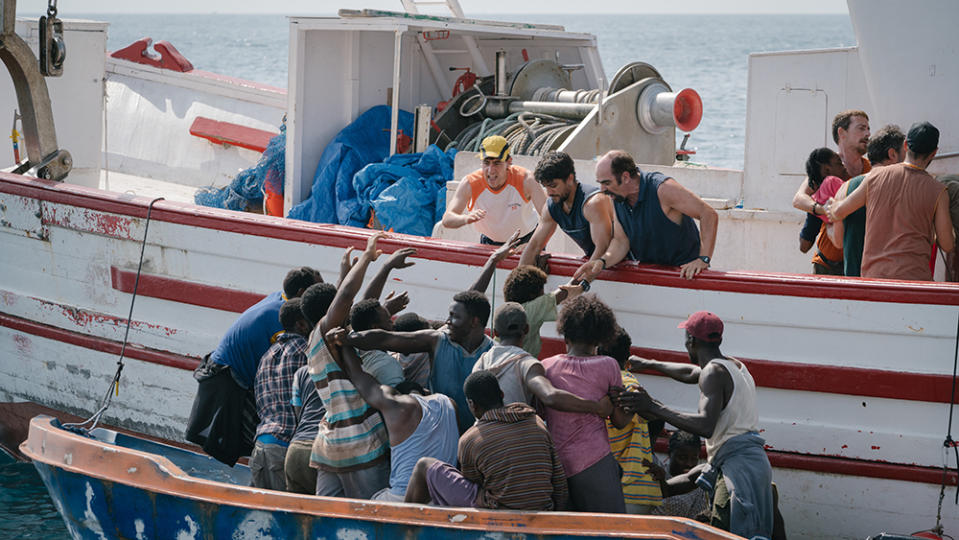Content Americas: 25% Attendance Hike, Market Caution, Brazil’s Bounce Back, Mexico’s Holy Grail and First News

MIAMI — Buoyed by a near celebratory inaugural edition last year – the first time many execs attending had seen one another post-Pandemic – the 2nd Content Americas neared its final bend to lift-off on Tuesday, with a bullish attendance and a market still reacting to the Netflix Corrective of 2022 when it began to measure the cost of its dramatic expansion worldwide.
Delegates, as of Monday, were approaching 2,000, nearly 25% up on 2023’s 1,600. That includes 150 exhibition companies and a significant increase on buyers – 950, doubled from last year.
More from Variety
Driving the spike in attendance is a sense of thanks and recognition of a generally happy experience last year.
“Content Americas saved the day, staging and covering the cost of the only Miami market in 2023, did very well last year, and immediately confirmed the date for a 2024 event before anyone else. Also, most experienced executives are part of the Board of Content Americas. I don’t know of any company which is not going to Content Americas,” said EO Media’s Ezequiel Olzanski.
That’s not to say that NATPE Global was blown out of the waters last week with less delegates – the organization estimates 1,500 – and an attendance focused more on North American participants.
With new competition, it’s a considerable achievement for Content Americas to have grown. 10 Takes on this year’s second edition, which unspools Jan. 23-25.
Streamer Correction Still Roils and Rules
Latin America is still hurting. Nearly two years after Netflix’s April 2022 reveal of its first subscriber loss in a decade – wiping more than $50 billion off its market cap in one fell swoop – there’s little evidence of a new largesse in global streamers’ content spend in Latin America. That is no minor detail. Worldwide, VOD services account for 26% of new original premieres, all genres. In Latin America that figure is 46%, The Wit’s Caroline Servy tells Variety. So streamers determine notably much of the energies of the whole of Latin America’s TV market.
Pull-Back in Latin America
Though far less affected by strikes than the U.S., scripted order series still plunged 30%, 2023 vs. 2022, in Mexico, Central and South America, affected by a longer-term global pullback in content investment, calculates Guy Bisson at Ampere Analysis, who co-opens Content Americas on Tuesday with a regional snapshot. Those waiting for a turnaround shouldn’t hold their breath. “On a macro-level, there’s a contraction in content spend that in our point of view is going to continue for the short and potentially mid-near future. That said, appetite for stories that could strike a chord in the zeitgeist continues.” says Gaumont TV’s Christian Gabela.
Content Americas: Sellers’ Immediate Goals.
So the TV mart’s sellers are rolling into Content Americas – staged for a second year running at the Hilton Miami Downtown, whose compactness favors on-the-hoof networking – with two aims. One is “to understand how the year is going to start in terms of acquisition and get the distribution cycle started,” says Olzanski. A second: Simply to network, crucial in the region. The jury is out on the strength of sales or production deals. It’s a safe bet, however, that mantras at panel discussions and table talk will be “bottom line” and “cost.”
Brazil Bounce Back
One country, at least, is on a roll. The Brazilian government is readying content investment quotas for streamers, no little thing when the country’s subscriber count could well be the world’s second highest for Netflix and HBO Max, Fremantle Mexico’s Manuel Marti notes. In a mixed French-German model, services will pay half of 6% of revenues to Brazil’s powerful federal incentive fund, the Fundo Setorial do Audiovisual (FSA). The other half goes straight to producers. “Brazil has 214 million inhabitants and really great producers but with such a huge internal market they didn’t need to go international. With the new law, if passed, they will have the opportunity to make their content watched elsewhere. That’s a business opportunity,” Martí argues. Many companies are based in São Paulo, who boasts a 20%-30% cash rebate. It could well be a powerful combination.
Co-Production, IP Sharing and Windowing
“Platforms have reduced their number of projects and a lot of a that is going on the co-production side,” says Olzanski. “We’ve gone through an era where ‘originals’ were the predominant way of getting projects financed. As platforms scale down their content spend, you’re seeing more and more opportunities for co-producing, co-financing, and co-owning projects with platforms and strategic partners,” Gabela says. Another alternative, often in the licensing space, is windowing, a now-established practice at Spanish public broadcaster RTVE, both on “The Law of the Sea,” a highlight at Tuesday’s Spanish Content Goldmine, aired on Valencia’s À Punt last Monday and then a bonanza event screening of the whole series on RTVE Sunday night June 21 primetime, simulcast on OTT service RTVE Play.

Movies
Five years ago, film companies were turning to TV production to continue making films. Now TV, companies are turning to films to help continue making series – and exploit new market openings and continue working with their top talent. Last Thursday, Movistar Plus+, best known for series – “The Plague,” “Riot Police,” “La Mesías” – announced its first film slate involving those series writer-directors or creators – Alberto Rodríguez, Rodrigo Sorogoyen, Los Javis – as new movie scribe-helmers. “Movies have been a growth area within the platforms for some time, both on the originals side as well as in the licensing side. There’s still too much volume of content out there in TV production that fails to move the subscriber needle for streamers. Movies are easily consumable. In a post peak-TV world, they offer a great opportunity for Gaumont TV to diversify and collaborate with filmmakers eager to return to the medium that originally inspired them to work in show business,” Gabela argues.
Mecca Mexico and Beyond
“Mexico is obviously our most important territory in Latin America,” says Gabela. “For Latin America, Mexico has proven to be the most relevant market. Platforms have been focusing most attention on Mexican projects,” adds Olzanski. The Holy Grail for Mexico remains the U.S. Hispanic market. In 2025, 20% of the U.S. population will be Latinx. Yet just less than 5% of speaking roles in movies and TV go to Hispanics, and more than half half have them as criminals and more than 20% as sexualised, Fremantle Mexico’s Manuel Marti notes. That’s dying for correctives, such as the Fabula-Fremantle’s “Hot Sur.” But reaching Latinx is no slam dunk: 90% of Latinx speak English very well and 35% don’t speak any Spanish at all. “The question is how to address an audience that has your culture and your values, but doesn’t share a language any longer,” Marti notes. “That will be the challenge in the years to come,” he adds.
Production Trends: Dailies Series, Docs and Diversity
It may be no coincidence that Mediterráneo, the sales arm of Spain’s Mediaset España, famed for scripted series such as “Wrong Side of the Tracks,” will be highlighting at Tuesday’s Spain Content Showcase a daily series, “Revenge is Mine,” and a doc, “Fentanyl: A Deadly Epidemic.” The showcase also features “Detective Touré,” the first Spanish series with a Black protagonist, played winningly by Malcolm Treviño-Sitté. The demand for docs, especially factual series, has risen across all platforms. A novela can make or break a broadcaster’s fortunes – think “The Vow” on RTVE – or become a signature Spanish-language how on a platform, such as Colombia’s “Cafe con Aroma de Mujer,” huge on Netflix.
Early Announcements at Content Americas
Yet, despite market caution, the wheels of business still turn. Variety announced a brace of exclusives on the cusp of Content Americas:
*Kate del Castillo will star as iconic singer Chavela Vargas in a bio-series from Colombia’s Caracol TV and Miracol Media;
“Queen of the South” showrunner Ben Lobato and director Gabriel Ripstein have boarded Fabula-Fremantle Mexico Project “Hot Sur,” a highlight at Content Americas first Copro Pitch.
*”Elite” producer Zeta Studios, Wattpad Webtoon Studios have inked a Latin America first-look deal to develop Webtoon titles.
All three show leading Latin American players identifying market opportunities – bio-series, the U.S. Hispanic market, web novels. In a cautious market, such opportunities still exist.

The Real Bottom Line: Talent
Little there has changed. “Our ambition is to try to work with the best talent possible, betting on the ideas they generate almost independently of what we feel the market is asking for, just because it takes such a long time for a project to be developed, and catching a trend in motion is like catching a falling knife,” says Gabela.
Best of Variety
Sign up for Variety’s Newsletter. For the latest news, follow us on Facebook, Twitter, and Instagram.

